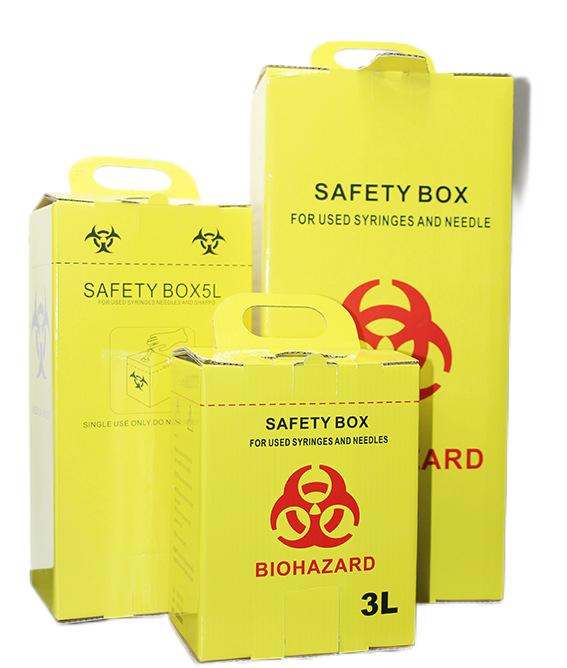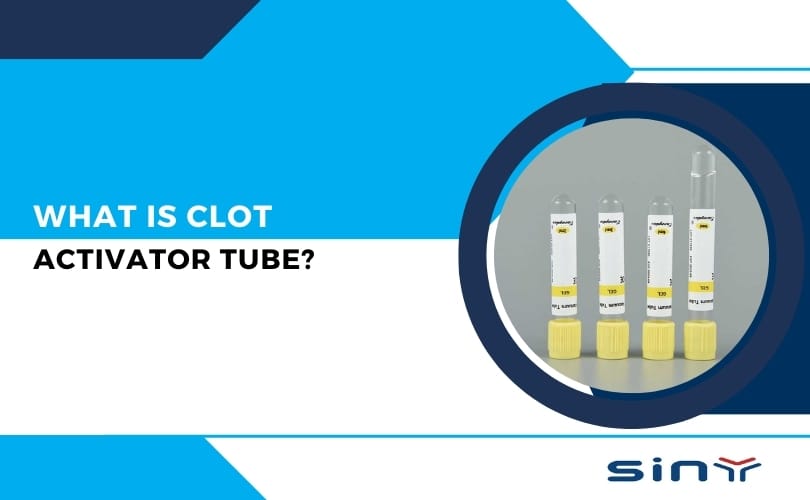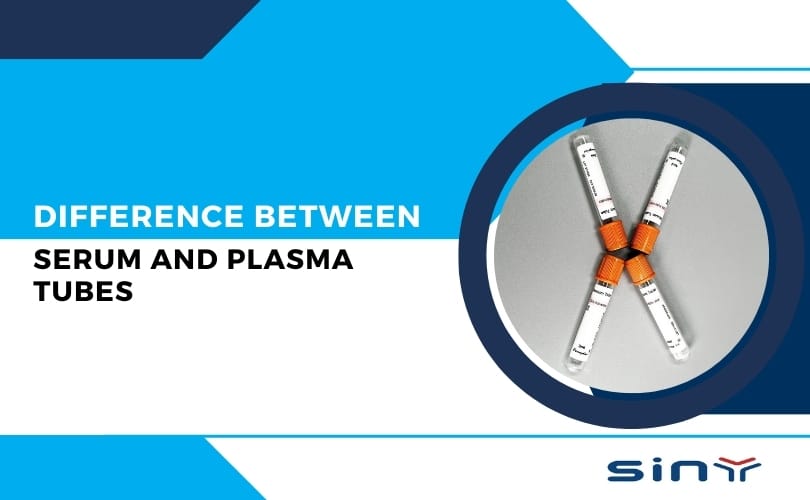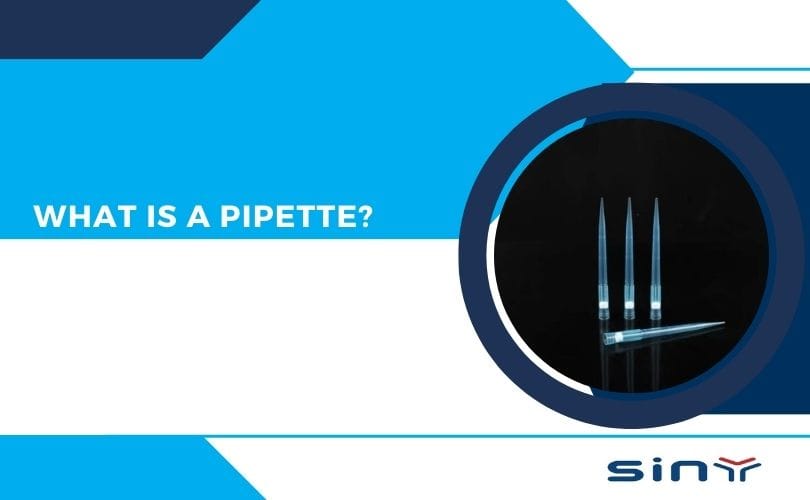A sharps box is a container for collecting medical sharps.
A sharps box, or a sharps container or biohazard container, is a specialized receptacle designed to safely dispose of sharp medical instruments that can cause injuries or infections. These containers are essential in healthcare settings to protect healthcare workers and the public from needle-stick injuries and contamination.
Table of Contents
What is a Sharps Box?
A sharps box or sharps container is a specialized, puncture-resistant disposal container designed for safely discarding medical instruments that can cut or pierce the skin, such as needles, syringes, and scalpels. These containers prevent accidental injuries and reduce the risk of infection. Hospitals, clinics, and homes typically use them for proper medical waste management. Once filled, users seal and handle them according to regulations for safe disposal. For more information, visit Siny Medical’s sharps container.

Sharps boxes characteristics
Sharps boxes are generally made of hard materials and have the following characteristics:
Puncture-proof: It can prevent sharp objects such as syringe needles and blades from puncturing the container to avoid personal injury and environmental pollution.
Good sealing: It has good sealing performance to prevent sharp objects from being exposed and leaking.
Easy to identify: It usually has obvious markings and is easy to distinguish and identify.
In medical places, such as hospitals and clinics, sharps boxes are widely used to collect used syringes, infusion needles, blades, glass ampoules, and other sharp objects to ensure the safe disposal of medical waste and reduce occupational exposure risks and environmental pollution.
What are the different types of sharps boxes?
According to the material
Plastic sharps box
Advantages: light, not easy to rust, relatively low cost, good corrosion resistance. Most medical places use plastic sharps boxes, which are easy to carry and place.
Disadvantages: The strength may not be as good as metal materials, and may break when subjected to large external force impact.
Metal sharps box
Advantages: Sturdy and durable, can withstand large external impact and heavy pressure, not easy to damage.
Disadvantages: Heavy weight, relatively inconvenient to carry, may rust, and the cost is usually high.
By Capacity
Small sharps box: Generally, the capacity is about 1L to 3L, suitable for small medical clinics, dental clinics, and other places with limited space or a small amount of sharps.
Medium sharps box: The capacity is usually 5L to 8L, suitable for use in medium-sized medical institutions.
Large sharps box: The capacity is more than 10L, mainly used in operating rooms, emergency departments, and other areas with large amounts of sharps in large hospitals.
By shape
Round sharps box: The appearance is round, the space occupied is relatively small, and it can be placed in corners or small spaces. However, due to the characteristics of the round shape, it may not be as stable as the square shape when placed.
Square sharps box: It has good stability and is not easy to tip over when placed. It can make more effective use of space and facilitate the placement of multiple sharps boxes in parallel.
Classification by opening method
Swivel open sharps box: The sharps box is opened and closed by rotating the lid. The operation is relatively simple and can better ensure the closure.
Flip-top sharps box: Similar to the flip-top design of a trash can, the lid is flipped open when in use, and the sharps are put in and then covered. This type of sharps box is more convenient to open, but the closure may be slightly inferior to the rotary open type.
How to choose a sharps box that suits your needs?
According to the place of use
Medical institution
Hospital: The operating room, emergency department, ward, and other areas of large hospitals produce a large number of sharps, Select a sharps box with a larger capacity, like one that holds more than 10L. Consider the high number of people in the hospital, and prioritize stability by choosing a square-shaped sharps box.
In terms of material, plastic or metal materials can be selected according to the budget and actual needs. Generally speaking, plastic sharps boxes are more common.
Clinic: Small clinics produce relatively few sharps, so a sharps box with a smaller capacity can be selected, such as a small sharps box of 1L – 3L. Considering the cost and space issues, a round or square sharps box made of plastic is more suitable.
Dental clinic: Dental treatment produces a large number of small-sized sharps, such as dental needles. You can choose a specially designed small sharps box to collect these small-sized sharps. At the same time, dental clinics usually have limited space, so you can choose a sharps box with a small shape that does not take up too much space.
Laboratory: Syringes, blades, and other sharps may be used in the laboratory during experimental operations. Choose a sharps box of appropriate capacity according to the size of the laboratory and the amount of sharps produced. If the laboratory has high requirements for hygiene, you can choose a sharps box with better materials and strong sealing to prevent sharps from leaking and polluting the environment.
Home care: For patients requiring home care, like long-term bedridden individuals needing to inject medication, you can choose a small household sharps box. Generally, a plastic sharps box with a capacity of about 1L is sufficient to facilitate the storage and disposal of used syringe needles, blood sugar test needles, and other sharps.
According to the type of sharps
Syringe needles: If you mainly collect syringe needles, you can choose a sharps box with a moderate opening to facilitate the insertion of needles. The sharps box effectively resists punctures and withstands the sharp point of a needle without puncturing.
Blades: For larger sharps like blades, choose a sharps box with a larger opening to allow smooth insertion. In addition, the material of the sharps box should be strong enough to prevent the blade from scratching.
Glass ampoules: When handling many glass ampoules, select a sharps box that can withstand a certain impact force to prevent the ampoules from breaking and damaging the box. Pay close attention to securely closing the sharps box to avoid any leakage of glass fragments.
According to relevant standards and regulations
Hygiene standards: Choose a sharps box that meets national hygiene standards to ensure that its material is safe, non-toxic, odorless, and will not cause harm to human health and the environment.
Labeling requirements: Mark the sharps box with labels like “medical waste” and “sharp box,” along with details such as capacity, production date, and usage instructions. Choose a sharps box with clear and standardized labels for easy management and use.
Environmental protection requirements: Consider the environmental protection performance of the sharps box and choose recyclable or easy-to-handle materials. At the same time, ensure that the sharps box will not cause secondary pollution to the environment during the disposal process.
How Does a Sharps Box Work?
A sharps box is designed to be both easy to use and highly secure. The process typically follows these steps:
- Inserting Sharps: Users drop sharps, like used needles or scalpels, into the box through a designated opening. This opening is small enough to prevent any access to the items once they are inside, reducing the risk of retrieval or accidental punctures.
- Filling the Container: When the medical & disposable sharps box is about two-thirds full, it’s time to seal it. Overfilling a sharps container increases the risk of needle sticks or injury.
- Sealing and Disposal: Once the container fills up, you securely seal it using a lock or a tightly-fitting, tamper-resistant lid. Depending on local regulations, a medical waste management service collects the sealed sharps box or you take it to a designated disposal site, such as a pharmacy or healthcare facility.
The sharps box design ensures that users cannot easily remove a sharp once placed inside, preventing accidental injury or misuse.
Conclusion
A sharps box plays a vital role in maintaining safety and hygiene in medical environments by offering a secure means of disposing of sharps such as needles and scalpels. Without these containers, the risk of needle-stick injuries, disease transmission, and improper waste disposal would be significantly higher. Understanding how to properly use a sharps Container, knowing the different types available, and adhering to local regulations ensures a safer environment for everyone involved.
FAQs
What are sharps used for?
Sharps serve a variety of medical sharap container purposes that involve breaking the skin. This includes injecting medication (e.g., insulin needles), drawing blood, or making surgical incisions (e.g., scalpels). Dentists, doctors, and patients managing chronic conditions all regularly use sharps.
How to use a sharps box?
Using a sharps box is simple. After using a sharp object like a needle or blade, place it carefully in the designated opening of the sharps container. Never overfill the box; seal it tightly when it reaches two-thirds full to ensure safe disposal.
Why is it called a sharps container?
A sharps container holds sharp medical instruments like Hospital/Clinic Collection syringes, infusion sets, and Blood Collection Needles, scalpels, and lancets because manufacturers specifically design it for this purpose. It resists punctures to prevent injuries and safely stores hazardous waste until you properly dispose of it.
What are sharps kits used for?
Sharps kits contain the necessary tools for handling and disposing of medical sharps safely. Sharps kits provide medical professionals and caregivers with tools to handle and dispose of needles or blades safely in settings like hospitals, clinics, or at-home care for chronic conditions, where contamination or injury risks exist.



























































